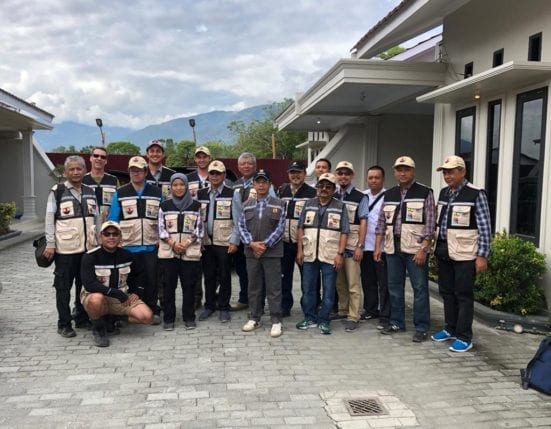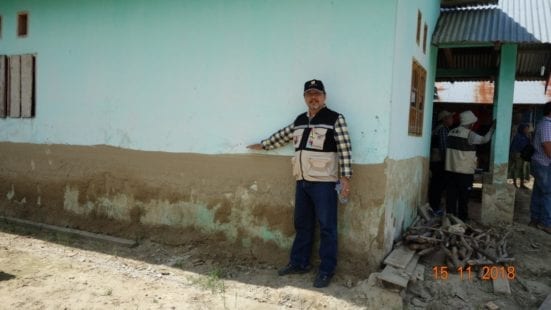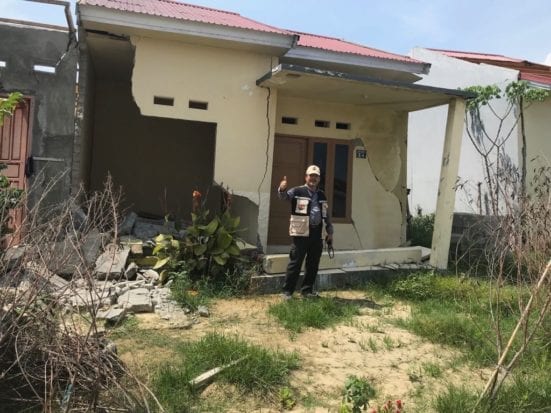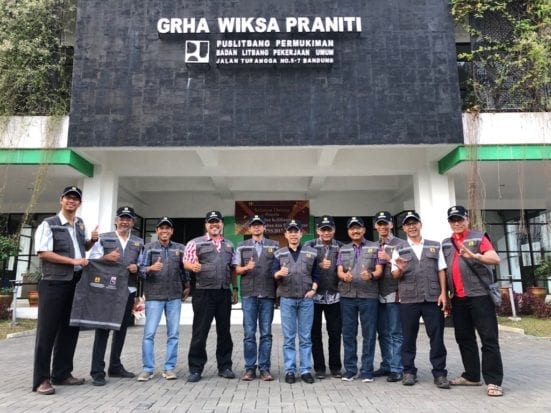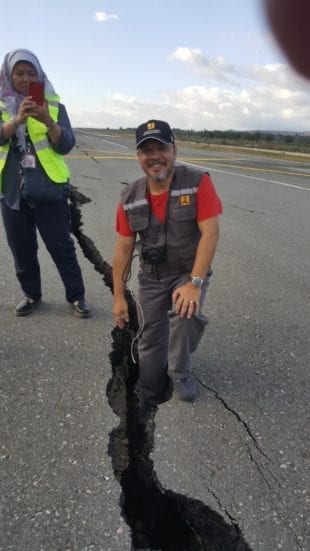A standard Crisis Management Plan should be drafted by the Malaysian government to help mitigate the damage and loss of human lives if the country is hit by an earthquake. Expert from the Center of Tropical Geoengineering of Universiti Teknologi Malaysia (UTM) or Geotrophic, Prof. Ir. Dr. Hj. Ramli Nazir said it was important for a country like Malaysia to prepare for this catastrophe. The high degree of scientific and engineering skills is also a major factor in the success of critical disaster crisis management.
“Through the experience of conducting research in Central Sulawesi where the earthquake and tsunami struck, many damages occurred due to a low level of preparedness among the people of the country.
“The government must play a role in making technical preparation and also providing education on earthquake prevention to the people to be ready, and to be in the most preparatory and tranquil conditions,” he said.
Prof. Ramli had previously departed for Palu, Indonesia to conduct an examination of the earth movements after the signal was picked up by the National Center for Earthquake Studies (PusGen) Indonesia.
While he was there, he had witnessed many property damages and loss of human life as a result of being unprepared. The Palu District in the Sumatra Islands was hit by the earthquake and tsunami on September 28, 2018.
“The 6.1 magnitude foreshock occurred at 15:00 local time while the 7.5 magnitude earthquake later in the evening caused severe destruction in Palu, Donggala and Sigi, destroying several homes and hospitals, a shopping center, a mosque, a church, a hotel and a road bridge.
“At least 2,100 people were confirmed dead after the disaster and more than 10,000 others injured, of which 4,612 were seriously injured,” said Prof. Ramli.
On the evening of 28 September, earthquakes followed by a tsunami struck Palu city. Indonesian authorities stated that at least 200 survivors in Palu were evacuated with a Hercules C-130 to Makassar, some for further medical treatment.
Nearly 17,000 people in Palu had been displaced by the earthquake and tsunami. The Data, Information and Public Relations Center of Indonesian National Board for Disaster Management stated that around 2.4 million people were affected by the earthquake and tsunami.
“In Donggala, the victims could not be accounted for due to limited access and downed communication lines. In the next days, emergency workers arrived in the city. The impact on the city was deadly, causing many victims could not be accounted for.
“The Indonesian National Board for Disaster Management stated that Sigi Regency was among the area with the most casualties. Reports from Petobo revealed that “dozens of people” were killed by the earthquake, “he said.
There were also reports of “massive liquefaction” which caused homes to be swept away. Officials also reported that numerous earthquakes with magnitude of over 5.0 had struck Sigi continuously, damaging more buildings and structures.
Ramli said that the heavy casualties of human lives and properties was because there was no contingency plans available to combat such an incident.
“The potential attack in Malaysia is very high based on the earthquake historic timeline of the peninsular Malaysia and also to East Malaysia.
“It is very important for us to have such a contingency plan or earthquake disaster management crisis plan to help us to overcome or at least reduce the losses inflicted by the disaster itself,” he said.
